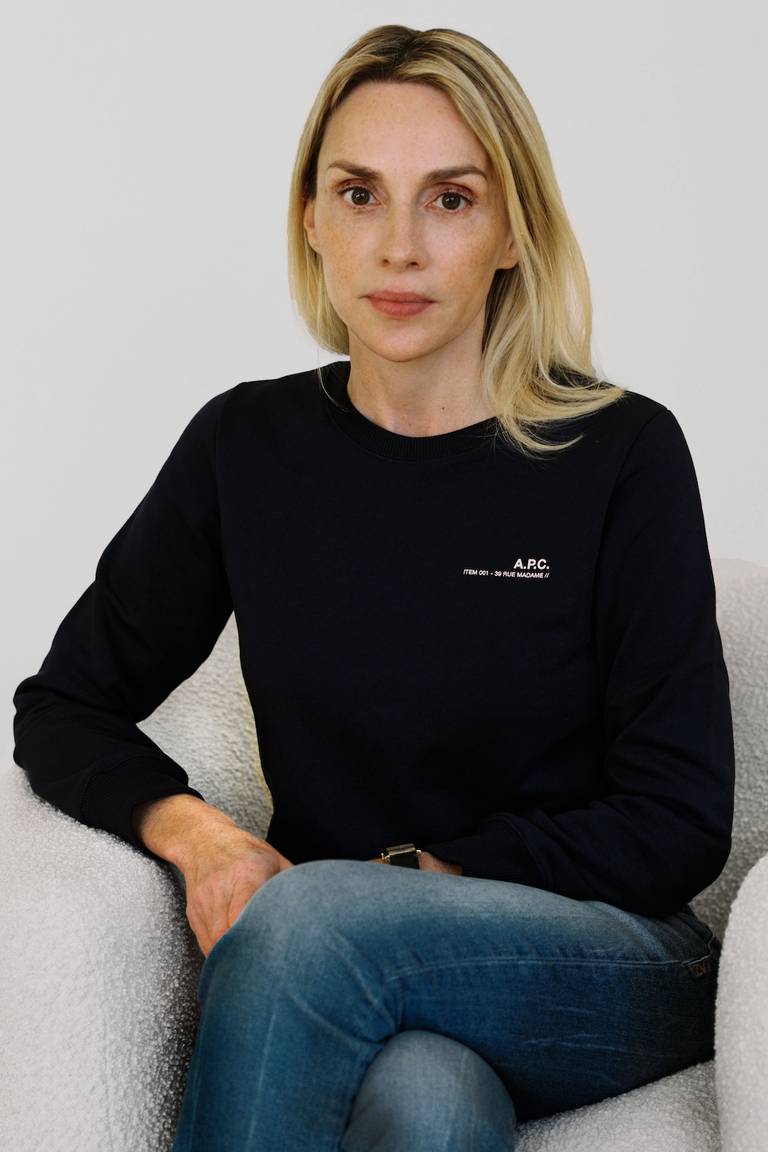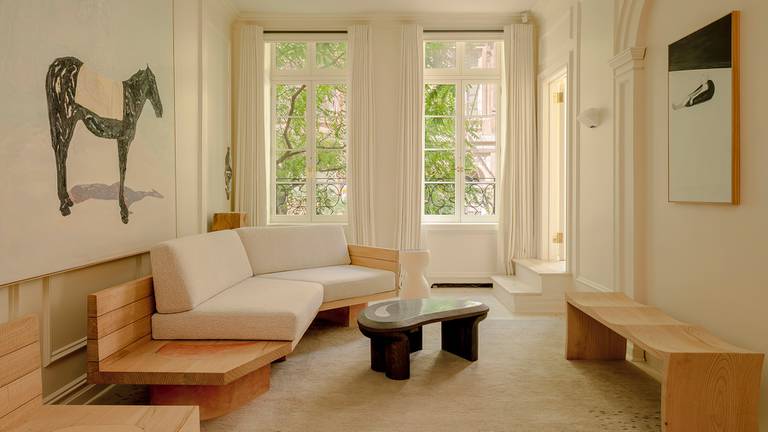
Having launched as a digital-only interior design platform in 2016, Invisible Collection is positioned as a pioneer in luxury homeware e-commerce, selling a curated, contemporary and bespoke selection of pieces online. Its growth trajectory and new business opportunities reflect success — Invisible Collection opened flagship stores in London and New York in 2022, with a new store to follow in Paris.
The retail spaces — selling pieces from the retailer’s roster of designers including the likes of Charles Zana, Emmanuelle Simon and Francesco Balzano — are designed to speak to their specific geographic location. The New York store reflects a townhouse and collector’s home, while the London HQ is more experiential and architecturally focused, with a materials library for architects and interior professionals to use. Paris will lean into the French capital’s chic aesthetic and joie de vivre.
Invisible Collection’s expansion into omnichannel retail mirrors their evolving partnership services, working with luxury maisons and retailers to design distinctive brick-and-mortar spaces to help revitalise retail experiences. Vying for attention in a competitive market, competing with e-commerce and virtual reality, and catering to increasingly picky consumers impacted by downturn, brands must deliver an exceptional experience to draw shoppers back in-store and increase dwell time.
A retail experience today must also deliver on consumer expectations around sustainable practices, which Invisible Collection broaches through its focus on bespoke collections and superior craftsmanship with strong sourcing credentials from family-run ateliers. In March 2023, Invisible Collection received B-Corp status.
Now, BoF sits down with Invisible Collection co-founder Isabelle Dubern-Mallevays to understand the blurring line between fashion and interiors, the role interiors will play in retail’s future, and how the company seeks to meet brands’ needs with its partnership service.

How has the relationship between fashion and interior design evolved in recent years?
Today, it is the fashion luxury companies like LVMH, Kering or Moncler that are the new patrons of the arts and design. Step by step, fashion brands have entered the art space, and now, the fashion and design worlds are completely colliding.
It starts on the runways, if you think about the colourful Gaetano Pesce chairs created for Bottega Veneta’s show, or the setting by Joana Vasconcelos at Dior’s latest show in Paris.
I think luxury businesses working with interior designers is a new but lasting trend — and I see the eye of the architects inside all these companies and their projects for their stores and headquarters. For example, recently for its Paris flagship, Cartier has collaborated with three interior designers: Studioparisien, Bruno Moinard and Laura Gonzalez — three great talents on our roster.
A big difference I have seen in the last ten years is how fashion brands employ their own architects — the likes of Cartier or Dior have teams of 30 to 40 architects or interior designers, pushing creatives to suggest and provide the most sophisticated materials. And competition is high between these companies for the best, most exclusive furniture and objects.
In an oversaturated market, what draws consumers back in-store?
Consumers are drawn to retail spaces that create more of a home atmosphere, moving away from the more transactional interiors. The Dior Avenue Montaigne flagship store is an example of this — it was once a little intimidating to walk into it, but now it is completely different — it is welcoming and friendly, and you are free to go where you want around the store, to discover different spaces in the store — all of which are bespoke and invoke the DNA of the brand.
Other luxury brands use this home-like approach too, like Chanel’s future project of a new store dedicated to their VIP clients, or the VIP room at the historic Fendi building in Rome. For this, Fendi’s former CEO Pietro Beccari co-created with the famous designer, Dimoremilano, also on Invisible Collection, a great mix of vintage items, like chandeliers from Venini, mixed with contemporary furniture, sofas or screens, which makes it just feel like a private home.
The big shift is the look and feel of retail spaces from intimidating, highly conceptual settings that looked fantastic yet uninviting, to warm, inspiring home-like decors.
Ultimately, I would say that the big shift is the look and feel of retail spaces from intimidating, highly conceptual settings that looked fantastic yet uninviting, to warm, inspiring home-like decors where consumers want to dwell and spend their time.
How might brands offset their product offering with retail interiors?
A luxury retail store needs something timeless and authentic. In the context of logomania and overrepresented brands, it can be interesting for consumers to discover a design and artistic point of view with aesthetic references to contemporary furniture.
We are far from the trends of the season — we look to instead increase storytelling through interiors, because you have so much to say through furniture, and about furniture, and people love that. Especially the younger generation — they discovered design during the pandemic, as everything on Instagram was about interiors.
It is about cultural discovery. You integrate the culture; you suggest taste. We do the same in our shops — we build a reference library, we integrate a conversation starter, and everything is a unified proposition within the brand offering.

Now, no fashion company can work without a great signature style. For example, the owner of Zadig & Voltaire just created a boutique hotel in Paris, Chateau Voltaire, with Festen Architecture, who helped them create a signature for the hotel, as it brings more culture and elevates your brand. In other words, to create a stronger brand experience, it is important for the brand’s unique identity to extend beyond the physical store and into other aspects of lifestyle, such as hotels.
How can interiors increase dwell time?
The best spaces are also designed around touch and aspiration. Fashion and interiors are tactile experiences, and we understand that consumers want to touch, to be inspired, to discuss and to connect. This is the experience we look to create in the retail space.
Of course, the more comfortable a space is, the longer your clients will stay. If you create a conversational, liveable space, the client will feel that and will welcome the opportunity of stepping into a different world.
How do you work directly with fashion brands to elevate their retail spaces?
A few years ago, I was talking to an architect from a fashion company, who said that they did all their sourcing for furniture and interiors for retail spaces on Invisible Collection. So, we decided to work directly with them, with a dedicated team sourcing what they needed, and that grew into us now working with many fashion brands directly. We sell to them, sourcing what they need for their global stores.
The main rule is discretion. The brands we work with all expect confidential sourcing because they want unique access.
For many of the brands we work with, we are the direct source for everything, including vintage pieces. We often create bespoke pieces too for our brand partners, allowing their designers to co-create products with our own designers. Brand architects want an aesthetic mix, not a total look. It is about combining the classic, trendlessness of brands with a fashion-forward, lasting design.
The main rule is discretion. The brands we work with all expect confidential sourcing because they want unique access. But this is easy to maintain as we produce bespoke collections for each specific project.
What do your brand clients expect from your services and products?
Their priority for their sourcing is superior craftsmanship with sustainable sourcing credentials, and all our production comes from French ateliers, almost all family-run, with a focus on bespoke and personalisation. We also try to source locally for luxury brands’ stores in their geographic areas, like for a project in Mumbai, we will find artists and designers there. On our end, we are fully committed to a more positive impact on people and the planet — we are one of the first companies in our sector to achieve B-Corp certification.
We have a special partnership with Le 19M, a venue created by Chanel’s initiative, dedicated to the promotion of savoir faire. We collaborate with four of Chanel’s Métiers d’Art, dedicated to interior design, and this partnership allows us to explore further connection and dialogue between fashion and design, while continuing to prioritise superior craftsmanship, and share knowledge and savoir faire.
This is a sponsored feature paid for by Invisible Collection as part of a BoF partnership.



